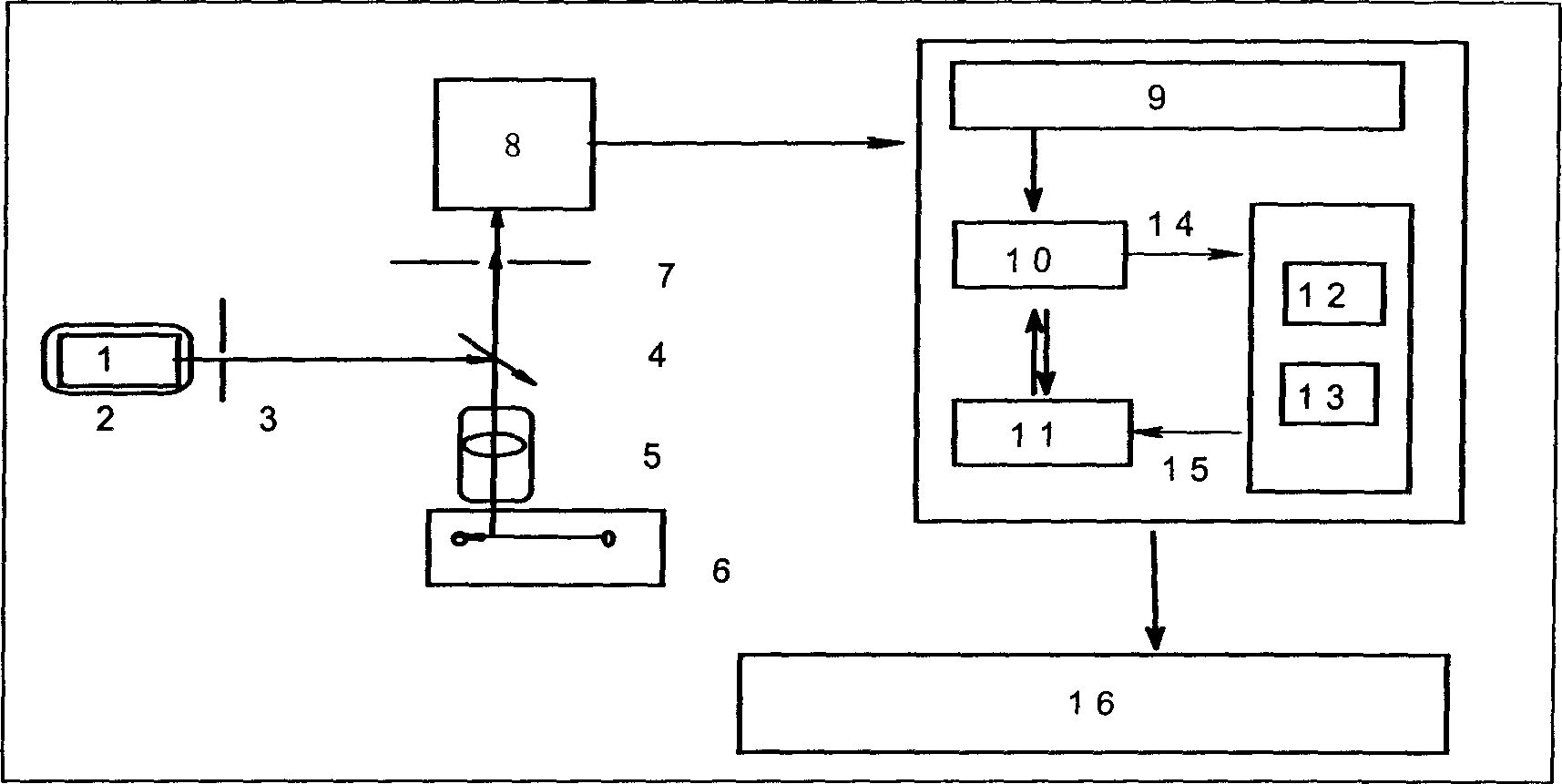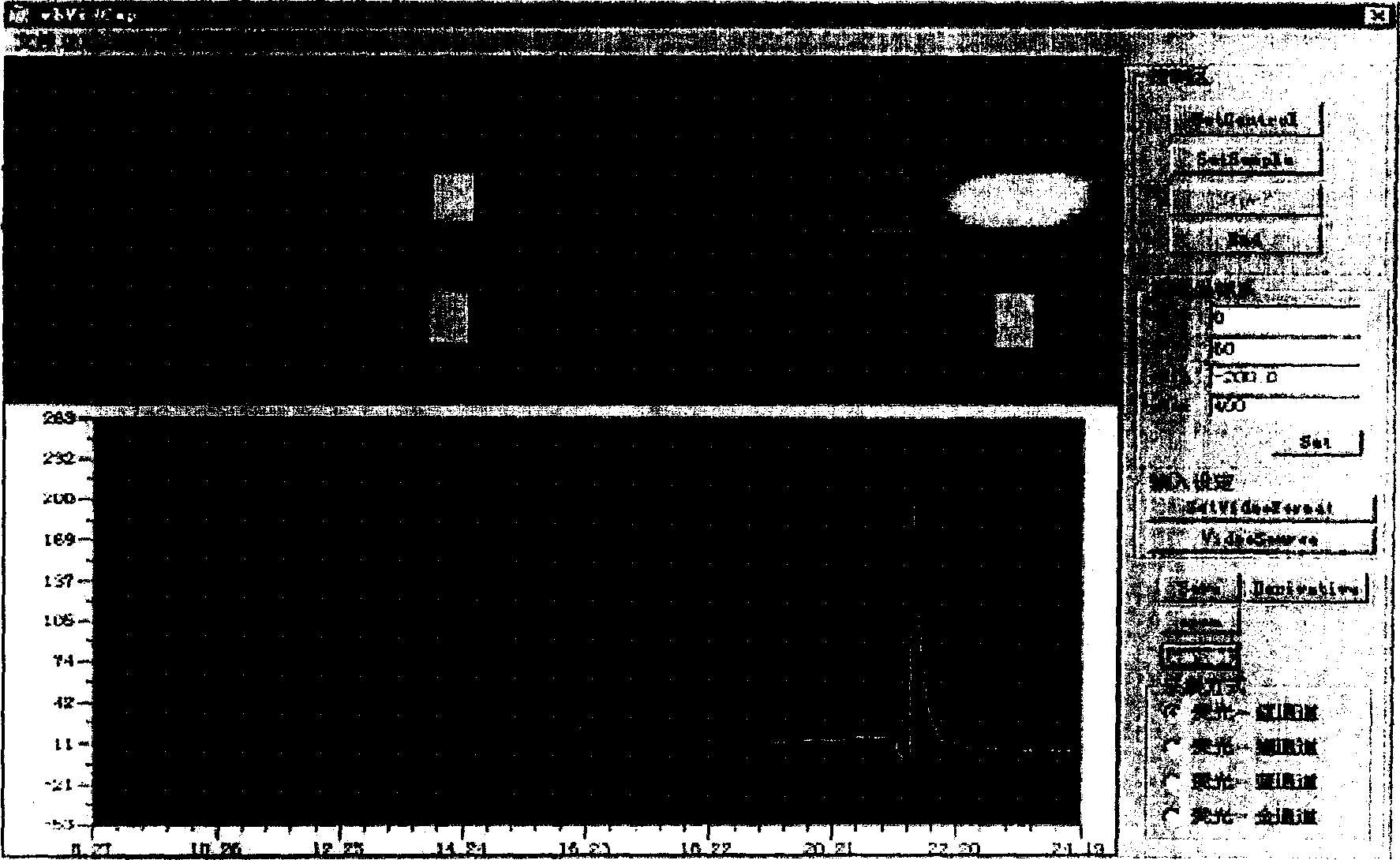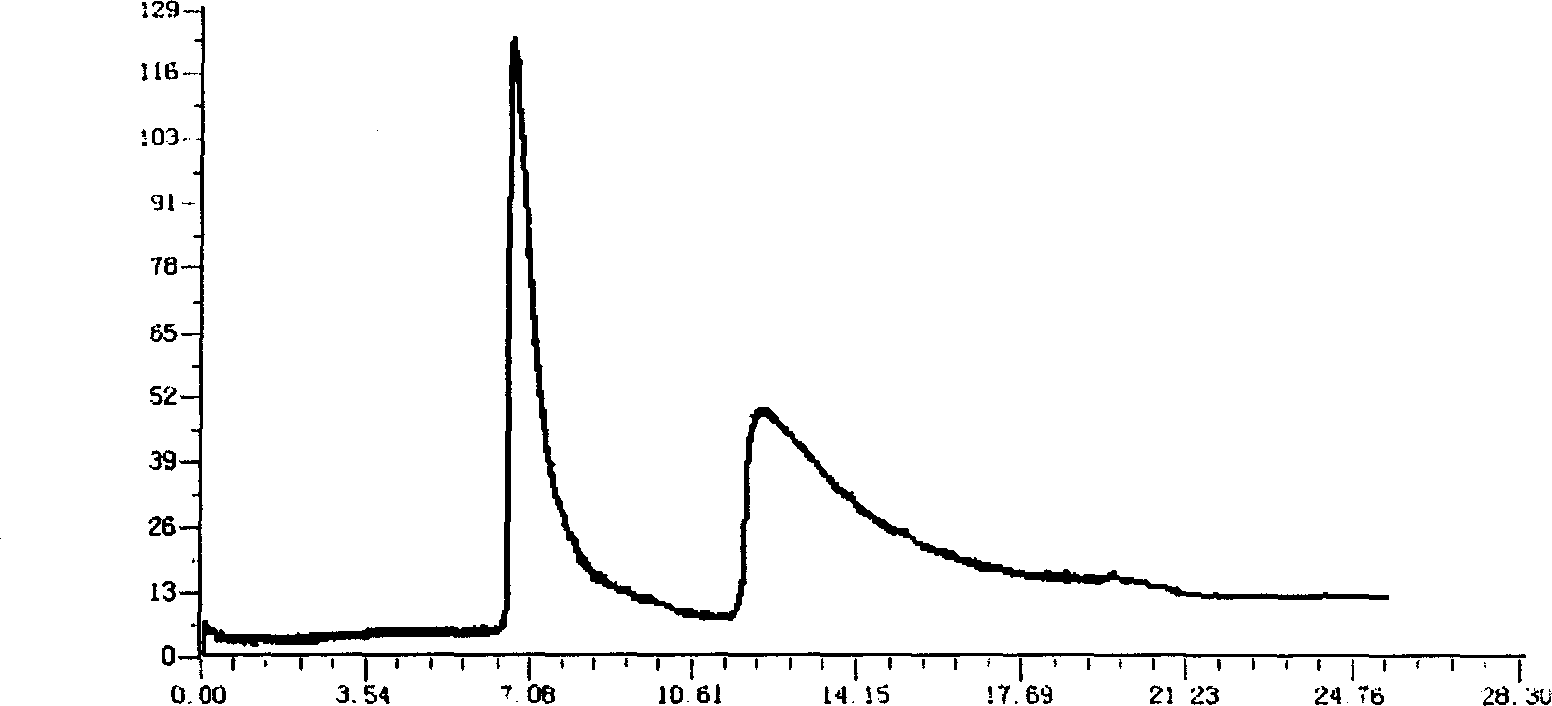Online self-calibration laser induced fluorescence detection method based on electric charge coupling apparatus
A technology of charge-coupled device and laser-induced fluorescence, which is applied in the field of liquid chromatography and online self-calibration micro-analysis laser-induced fluorescence detection, which can solve the problems of difficult excitation light source and high price
- Summary
- Abstract
- Description
- Claims
- Application Information
AI Technical Summary
Problems solved by technology
Method used
Image
Examples
Embodiment 1
[0036] Capillary Electrophoresis-Laser Induced Fluorescence Separation and Detection of Mixed Solutions of Methylene Blue and Nile Blue
[0037] Take a capillary of a certain length, burn a detection window of a suitable size, fix the capillary on the microscopic platform, adjust the microscopic platform, and place the detection window at an appropriate position in the optical path. Select the fluorescence detection area on the software interface, select the reference light area in the non-sample light area, and adjust other parameters of the program. The two ends of the capillary are immersed in the buffer solution, and connected to the two ends of the high-voltage power supply through platinum wire electrodes. Rinse the capillary with a buffer solution first, then replace the buffer solution at the injection end with the sample solution. After the sample is injected, replace the injection end with a buffer solution, apply a certain voltage for electrophoretic separatio...
Embodiment 2
[0046] Microchip Electrophoresis-Laser Induced Fluorescence Separation of Mixed Solutions of Methylene Blue and Nile Blue
[0047] Fix the microchip on the microscopic platform, adjust the microscopic platform, and set the detection window to the sample detection position in the light path. Select the fluorescence detection area on the software interface, and select the reference light area in the non-sample area, and adjust other parameters of the program. The buffer solution was manually dropped into the channel in advance, and connected to both ends of the high-voltage power supply through platinum wire electrodes. Rinse the separation channel with buffer solution first, and then drop the sample solution into the sampling tank. After electrosampling for a period of time, quickly rinse the sample solution in the sampling tank with buffer solution, and then drip the buffer solution into the sampling tank. Apply a certain voltage for electrophoretic separation, and a...
Embodiment 3
[0055] Microchip electrophoresis-semiconductor laser-induced fluorescence indirect detection of berberine
[0056] Operation is the same as embodiment two.
[0057] Laser: 630nm semiconductor laser; fluorescence collecting objective lens × 10 / 0.25, filter 720nm cut-off filter
[0058] Background buffer: 2.0*10 -5 M methylene blue (pH3.00, prepared in 5mM phosphate buffer)
[0059] Sample: 2.0*10 -5 M, prepared with pure distilled water
[0060] Injection: 0.50KV, 5.0s
[0061] Operation: 0.50KV, ~0.9μA
[0062] Total channel length: 50mm, effective separation length: 40mm
[0063] Under this condition, the minimum detection concentration of berberine is 2.0*10 -7 m
[0064] Microchip electrophoresis-laser-induced fluorescence diagram for the indirect detection of berberine with methylene blue Figure 5 shown.
PUM
 Login to View More
Login to View More Abstract
Description
Claims
Application Information
 Login to View More
Login to View More - Generate Ideas
- Intellectual Property
- Life Sciences
- Materials
- Tech Scout
- Unparalleled Data Quality
- Higher Quality Content
- 60% Fewer Hallucinations
Browse by: Latest US Patents, China's latest patents, Technical Efficacy Thesaurus, Application Domain, Technology Topic, Popular Technical Reports.
© 2025 PatSnap. All rights reserved.Legal|Privacy policy|Modern Slavery Act Transparency Statement|Sitemap|About US| Contact US: help@patsnap.com



